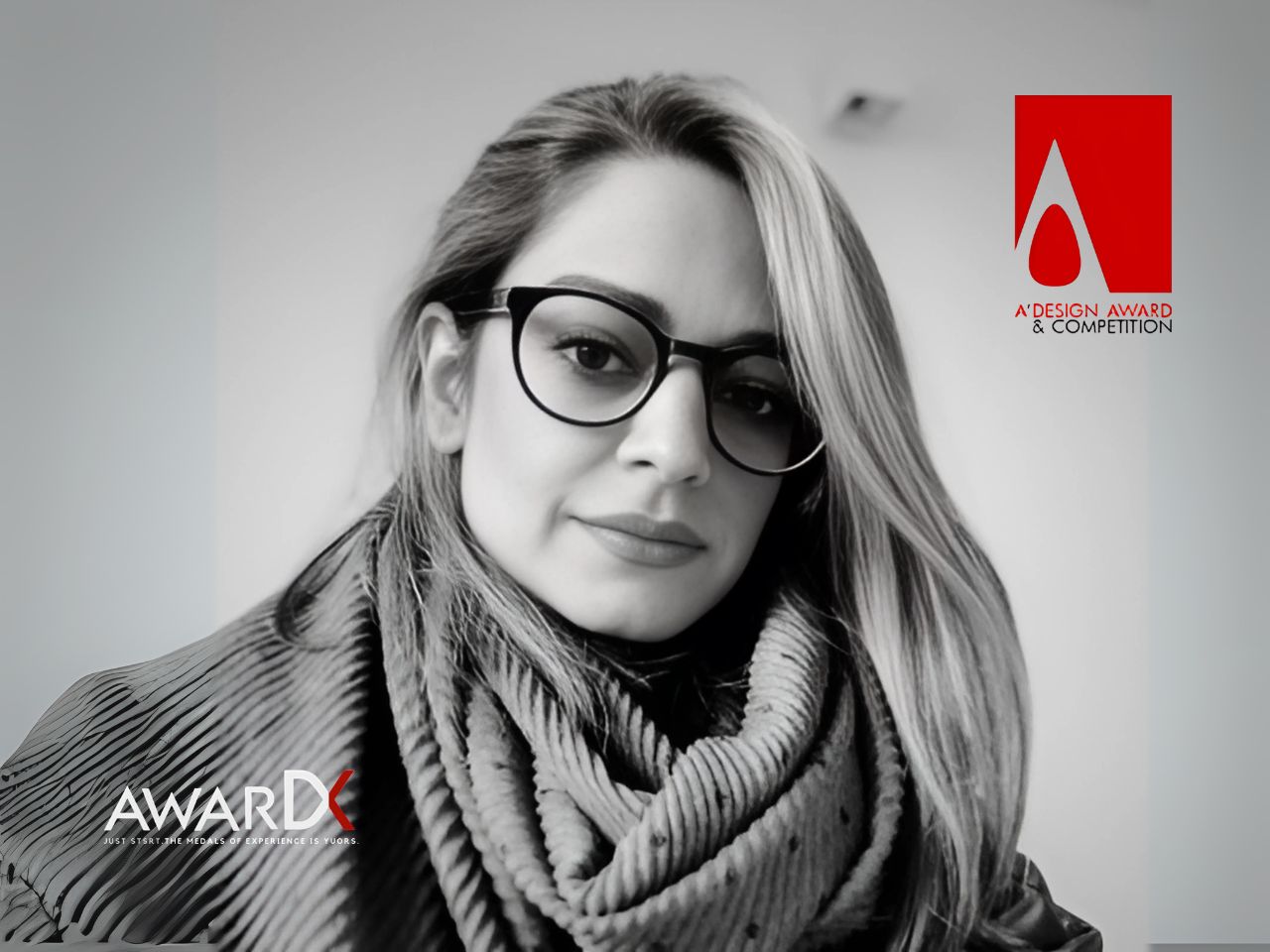Siavash Sufi Nejad (also credited as Abbas Sufinejad) is a multidisciplinary Iranian designer and maker whose practice sits at the meeting point of architecture, craft and contemporary furniture. His Stoniture Sofa is a signature project that translates geological presence into domestic softness — a sofa that reads like a piece of natural stone softened for human use. The Stoniture Sofa was honored with a Golden A’ Design Award in the Furniture Design category, a recognition that helped bring the piece international attention.
Product focus — what Stoniture is, at a glance
Stoniture is a nature-inspired sofa designed to evoke the familiarity and gravitas of stone while remaining inviting and comfortable. Its visual strategy is deliberately simple: broad, gently curved edges, a compact footprint and a monolithic silhouette that sits low to the ground. The piece uses a wooden internal frame and a seat made with 30-density foam to balance supportive comfort with sculptural presence. Its measured proportions (roughly 110 × 95 × 50 cm) make it a versatile element for intimate living areas, hotel suites and curated retail environments.
Designer mindset — stone as memory, comfort as priority
When designing Stoniture, Siavash started with an idea rather than a form: how do you create an object that feels like a geological memory in a domestic setting? The mental model was stone — its weight, its permanence, the way it anchors a landscape — filtered through a human-centered lens. The goal was not to mimic stone literally, but to capture its psychological qualities: trustworthiness, calm, and an enduring simplicity. Comfort and ergonomics were non-negotiable; the challenge was to hold that soft human experience within a form that visually suggests permanence.
From concept to prototype — the development process
- Research & sketching. The initial phase focused on mood boards and sketches that compared profiles of natural boulders, minimalist sculpture and traditional Iranian stonework. The designer studied how light and shadow read on curved stone surfaces and translated those observations into sectional sketches for seating ergonomics.
- Structural iteration. Translating a monolithic look into a comfortable sofa meant engineering a reliable internal structure. Wooden frames were developed and tested for load distribution and long-term durability. Prototyping emphasized joinery that could carry the visual weight without adding visual clutter.
- Foam and surface testing. Seat comfort was tuned through iterative foam layering; 30-density foam was selected to deliver both immediate comfort and resilience under repeated use. Upholstery tests ensured that fabric tension and seam placement preserved the stone-like silhouette without showing unsightly pulls or wrinkles.
- Full-scale mockups. At least one full-scale mockup was used to validate proportions, seat depth and edge rounding. These mockups were critiqued in situ (living room mockups and simulated hospitality lobbies) to ensure the piece read as intended in real contexts.
- Finishing & production readiness. The final steps included specifying upholstery panels, seam patterns, and resilient under-structures so the sofa could be reliably reproduced while keeping the crafted feel.
This tight loop — mood → engineering → prototyping → refinement — enabled Stoniture to look monolithic without being heavy or awkward to live with.
Material logic — making stone feel soft
Stoniture’s material strategy is deliberately hybrid. A timber sub-frame gives predictable structural behavior and repairability. Foam densities are layered to allow a gentle compression profile that returns cleanly, preventing a sagged “used” look. The upholstery is cut and seamed to emphasize broad, continuous planes rather than many stitched panels; seams are hidden in curved transitions to preserve the visual mass. The result: a tactile surface that invites touch while suggesting the cool, reassuring presence of stone.
Ergonomics & human factors — comfort within a monument
One of the design constraints was preventing a “sculpture” from becoming an unusable object. Siavash tuned seat depth, back angle and edge radius so the sofa encourages relaxed postures without collapsing into slouch. The curved edges serve two ergonomic purposes: they remove hard corners that dig into elbows and thighs, and they funnel weight into the frame so cushions compress predictably. The compact dimensions help the piece fit modern interiors while maintaining a dominant, anchoring presence.
Production challenges and solutions
Creating a monolithic-looking sofa that is actually modular and serviceable required several production decisions:
Hidden joinery: internal frames join in a way that is structurally robust but invisible from the outside.
Replaceable cushions: although the silhouette reads as a single mass, foam cores and upholstery panels are serviceable so individual parts can be repaired or replaced.
Tolerance management: seam allowances and upholstery stretch were specified tightly to avoid visual inconsistencies in multiple production runs.
These production choices keep the product practical for small-batch manufacturing and premium retail.
A’ Design Award — what the recognition meant
Winning the Golden A’ Design Award positioned Stoniture on an international stage. Beyond the trophy, the recognition supplied professional press materials, curated imagery and validation that simplifies conversations with galleries, boutique hoteliers and international retailers. For a boutique brand like Villasufia (the studio/brand behind the project), the award helps justify higher price positioning and accelerates interest from specifiers looking for singular, story-driven pieces.
Where Stoniture performs best — interiors & settings
Stoniture is especially effective in settings that benefit from a quiet focal point:
Boutique hotel suites where a single object can define a room’s attitude;
Curated residential dens where collectors want a sculptural, tactile seating piece;
Gallery or showroom vignettes that invite both photography and physical interaction.
Because of its compact footprint and strong visual identity, the sofa works in adaptive reuse projects and contemporary apartment interiors where space is precious but character is desired.
Commercial & brand implications
For the Villasufia brand and for independent makers, Stoniture demonstrates a viable business strategy: pair strong, narrative-driven design with robust engineering and a clear production path. The award gave the product marketing leverage, but the real commercial value comes from reproducibility and after-sales care (replaceable parts, finish options, warranty). The product’s story — inspired by stone and tuned for living — becomes a clear selling point in curated sales channels that prize provenance, craft and concept.
Curatorial notes — how to present Stoniture in editorial or retail
Hero photograph: low camera angle to emphasize the sofa’s grounded, stone-like presence; natural light to show soft transitions.
Detail images: closeups of seam transitions, cushion profiles and the wooden frame edge.
Context shots: pair the sofa with minimalist tables and warm textiles to show scale and versatility.
Copy focus: lead with the concept (stone → comfort), then explain production choices that translate concept into livability.
This structure helps readers and buyers quickly grasp both the poetic idea and the practical value.
Sustainability & lifecycle thinking
Although Stoniture is conceptually inspired by stone (which is not renewable), its material choices lean toward longevity and repairability: timber frames, replaceable foams and upholstery, and finishes selected for durability. Designing for serviceability (replaceable cushions, accessible upholstery panels) reduces waste and aligns the product with circular design priorities increasingly demanded by clients and procurement teams.
Takeaways for designers and product teams
Start with a strong conceptual anchor (in Stoniture’s case, stone) but always translate that anchor into measurable human outcomes (comfort, scale, serviceability).
Prototype early and at scale: full-size mockups reveal posture and mass that sketches cannot.
Engineer for serviceability: create the appearance of monolith while allowing discrete repair and replacement.
Use awards strategically: they amplify visibility but must be supported by a clear production and aftercare plan to convert interest into sales.
More information:
https://competition.adesignaward.com/ada-winner-design.php?ID=150910
https://competition.adesignaward.com/gooddesigner.php?profile=237569
https://competition.adesignaward.com/design.php?ID=150910
https://sufinejad.com/
https://museumofdesign.com/exhibition-item.php?ITEM=150910



